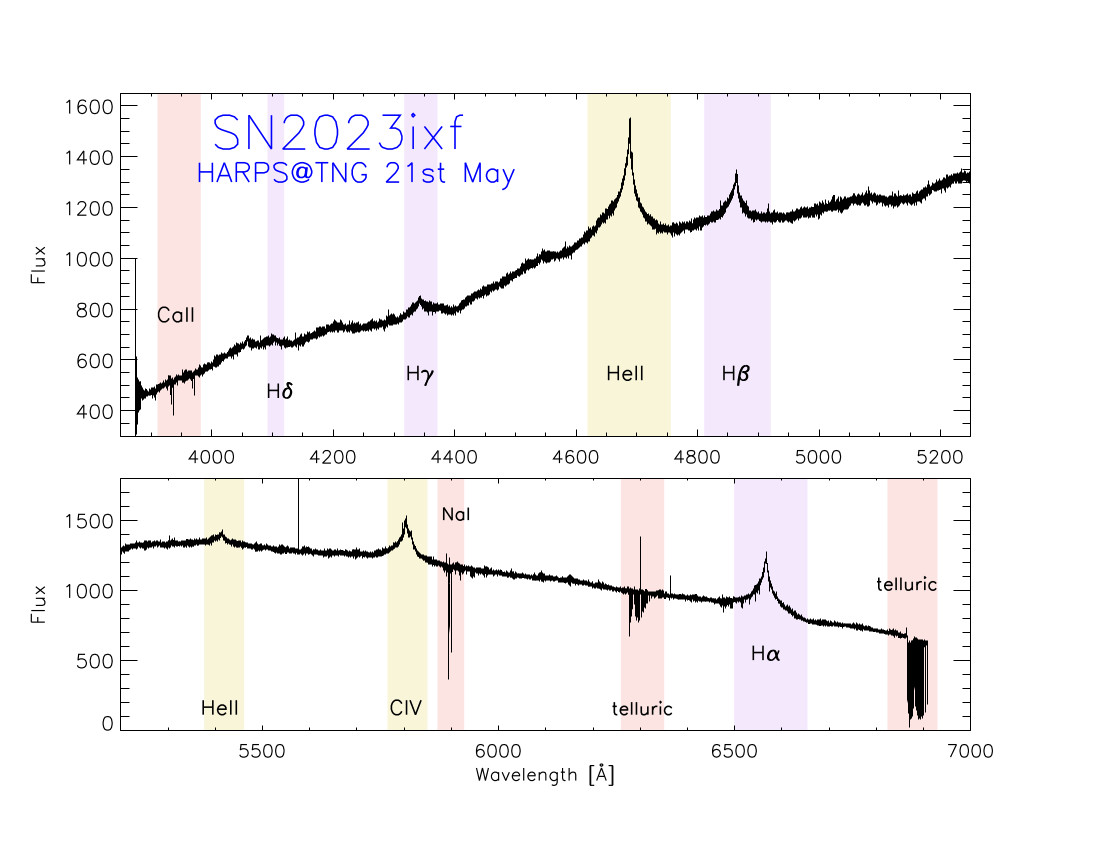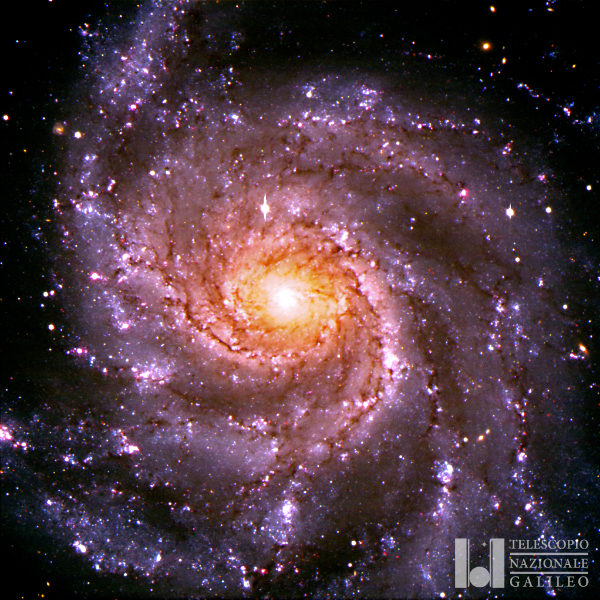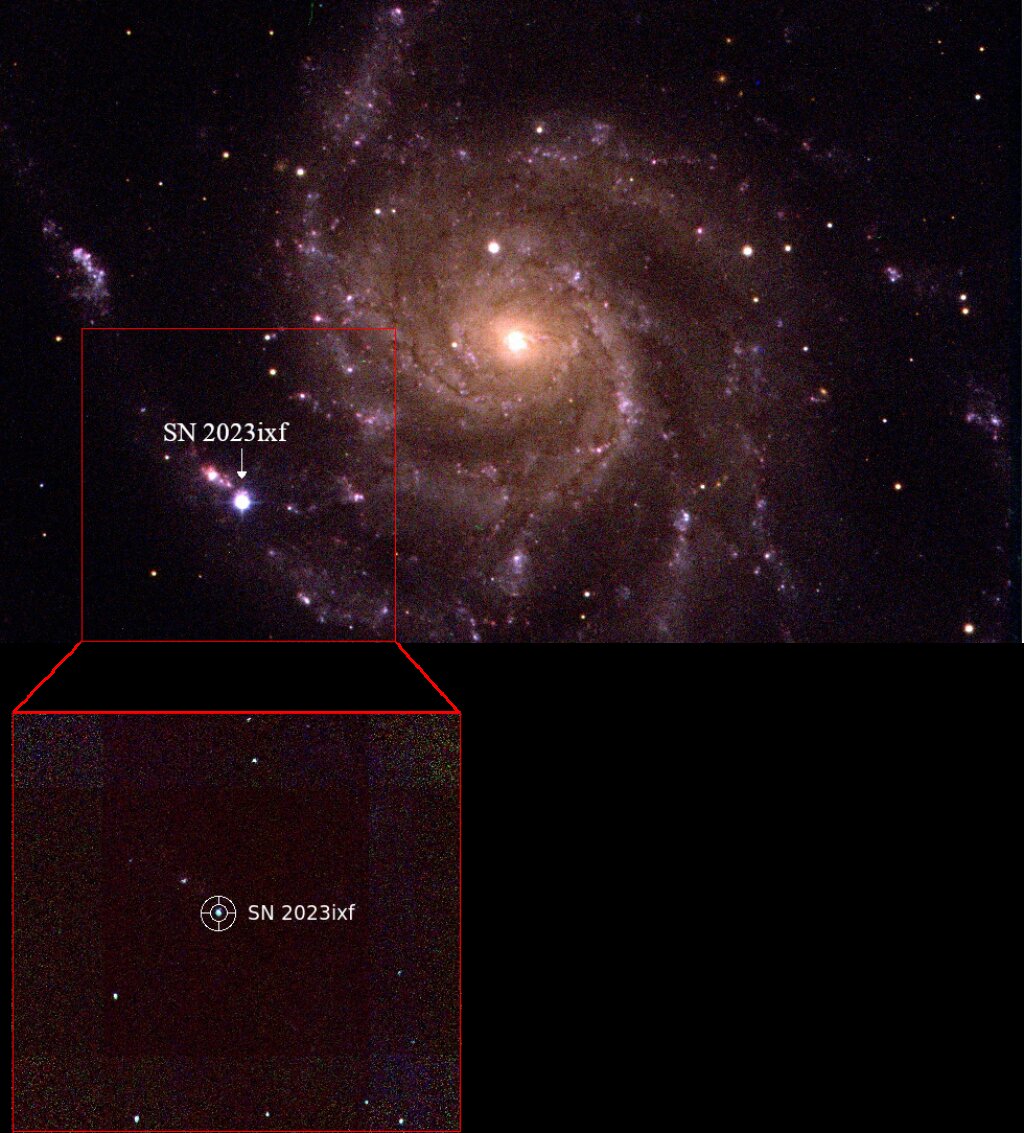The supernova SN2023 ixf observed at the Telescopio Nazionale Galileo
SN 2023ixf is a recently discovered Type II supernova in the spiral galaxy M101, located just 6.5 Mpc away from us. Its proximity allows for detailed observations of this hydrogen-rich event. Remarkably, SN 2023ixf is one of the brightest supernovae observed in recent decades, reaching an apparent magnitude of 10.8 in the visible spectrum.
Since May 21st, the Istituto Nazionale di Astrofisica (INAF) and the Instituto de Astrofísica de Canarias (IAC) have initiated together an observational campaign at the Telescopio Nazionale Galileo (TNG), in order to follow up the supernova event and gather crucial data.
The observations are being conducted using the high-resolution spectrograph, HARPSN, operating in the visible wavelength range, as well as the Near Infrared Camera Spectrometer (NICS). The brightness of the SN 2023ixf allows to capture with the instruments of the TNG unprecedented detailed spectra and imaging of the supernova, enabling a comprehensive analysis of its properties and evolution.
The spectra of SN 2023ixf exhibit a distinct blue continuum, indicating a high photospheric temperature exceeding 10,000 K. Notably, the presence of narrow emission lines is observed. These narrow features suggest relatively low expansion velocities, approximately 1,000 km/s, significantly lower than the typical velocities of supernova ejecta, which commonly exceed speeds of 10,000 km/s. This distinction implies that we are not directly observing the fast material ejected during the star's explosion. Instead, the spectra reveal the interaction between the rapidly expanding ejecta and a dense, slow-moving gas shell that was expelled by the dying star years or decades before its ultimate explosion.
This interaction between the fast ejecta and the surrounding gas shell releases a substantial amount of energy, playing a pivotal role in shaping the evolution of SN 2023ixf and similar phenomena. Moreover, the emission lines from the Balmer series are broad enough to rule out a contamination by hydrogen originating from H II regions within the host galaxy, M101.
Thanks to Giorgio Valerin (INAF), David Aguado (IAC), Nuria Alvarez Crespo (Universidad Complutense de Madrid) and the TNG staff, all of them coordinated by Marco Pedani in the scheduling and organization of the observing campaign.
In the following pictures some preliminary results of the campaign are shown.

Picture 3. The captivating spectrum of SN2023ixf, obtained thanks to the unique features of the high-resolution spectrograph HARPS-N, its ultrastability and its extreme precision in the measurement of radial velocities. The intricate emission and absorption lines of hydrogen, helium, carbon, sodium and calcium are clearly seen in this groundbreaking collaboration between IAC, INAF and the TNG. Credits: David Aguado (IAC)



